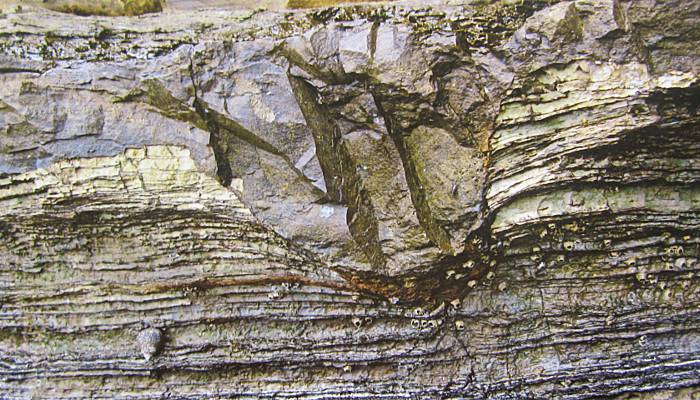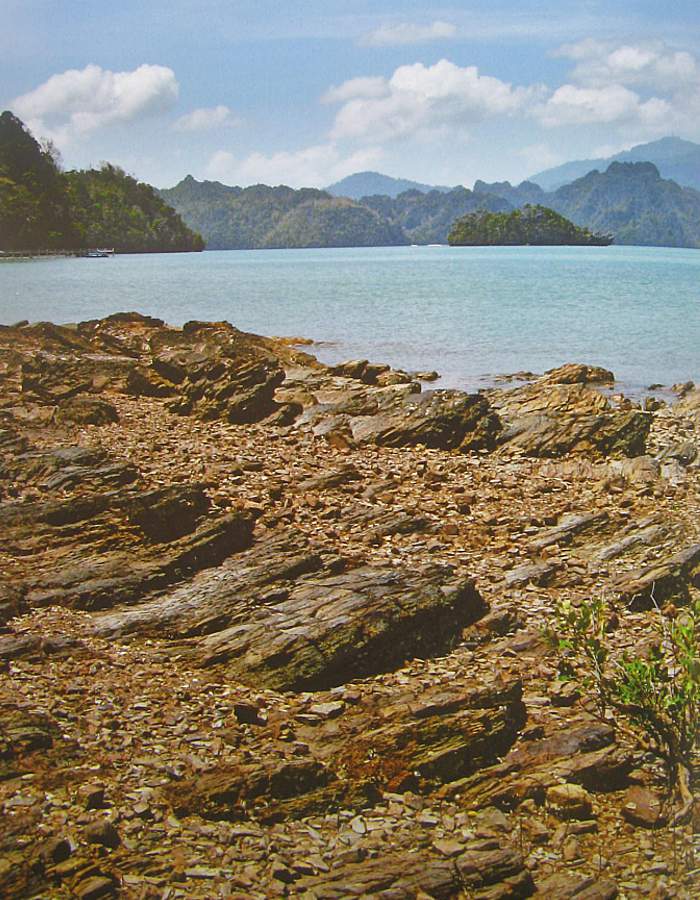
Much of the rocks of Kilim is made up of the Setul Formation, the oldest carbonate rock in the region, formed 490-370 million years ago.
The prominent features of the Kilim area are karst hills with vertical and overhanging cliffs, exposed bare rocks, islands and caves. Different landforms indictae different stages of karst development. As to special forest types, Kilim is home to the country’s only mangrove ecosystem on a limestone substratum.
From the Ordovician to Permian period, this area was under a marine neritic environment, depositing predominantly carbonate particles with little amount of detrital particles, which have now become limestone, sandstone and shale. After being exposed to the surface due to the movement in the earth’s crust (tectonic uplifting), the rocks had been shaped through prolonged dissolution and erosion by ground water, surface runoff and wave actions, forming the present day karst landform. These landforms are of great value for scientific study.
A geologically older area like Langkawi has greater rock diversity because it has gone through many geological processes over a long time. The most common is limestone which is hard, thickly layered, and is made up wholly of carbonate materials.
Meanwhile, there is a whole potpourri of detrital rocks, including well-bedded sandstone, shale and black cherty rocks. The younger rocks of the Singa Formation’s rocks consist of red and grey shale and mudstone interlayered with sandstone. The red shale and mudstone are often embedded with various types of pebbles of older rocks.

